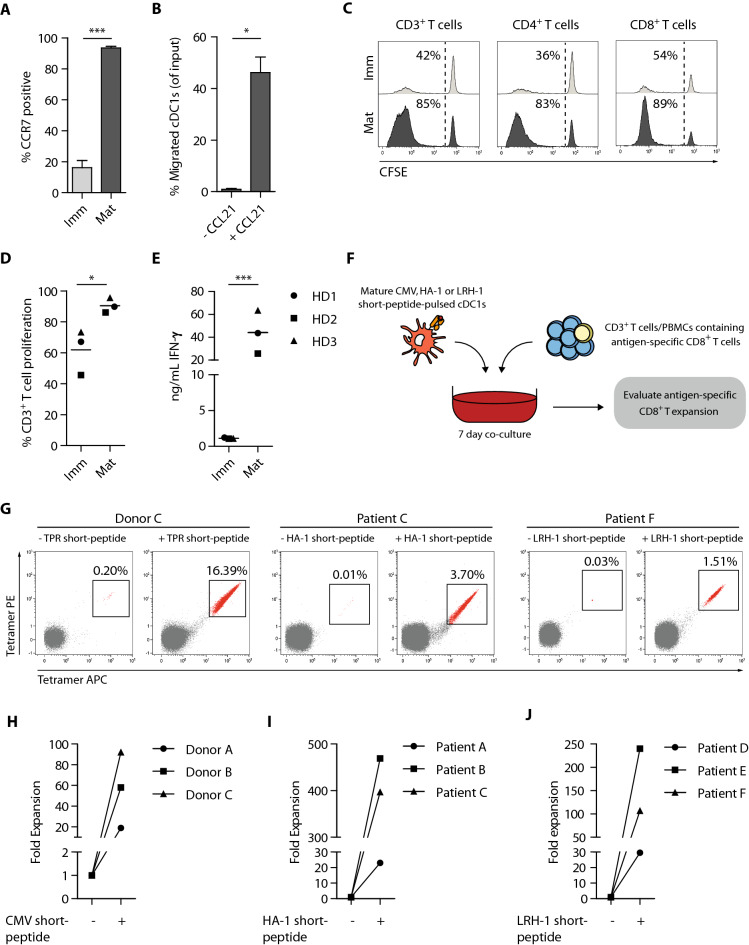Fig. 4.
Ex vivo-generated cDC1s possess lymph node homing capacity, efficiently induce alloreactive T cell proliferation and boost expansion of tumor-reactive T cells. a Expression of lymph node homing chemokine receptor CCR7 on immature and mature ex vivo-generated cDC1s. Data is shown as mean ± SEM (n = 3). b Percentage of ex vivo-generated cDC1s migrated to LN homing chemokine CCL21 (250 ng/mL). Data is shown as mean ± SEM (n = 3). c–d Representative histograms (c) and bar graph (d) showing allogeneic T cells proliferation at day 5 of culture (cDC1:T cell ratio of 1:10). Lines indicate mean value (n = 3). e Release of IFN-γ upon 5 days T cell stimulation in alloMLRs using a cDC1:T cell ratio of 1:10. Line indicates mean value (n = 3). f Schematic overview of antigen-specific T cell assays. Mature ex vivo-generated cDC1s pulsed with CMV, HA-1 or LRH-1 short-peptide were co-cultured with autologous CD3+ T cells (CMV assay) or allogeneic patient-derived PBMCs (HA-1 and LRH-1 assay) for 7 days, whereupon antigen-specific CD8+ T cell proliferation was assessed using tetramer-based flow cytometry. g–j Representative dot plots in which numbers indicate frequencies of TPR (CMV), HA-1 or LRH-1 specific CD8+ T cells upon stimulation with ex vivo-generated cDC1s with/without peptide-pulsing (g) and graphs showing absolute numbers of CMV, HA-1 or LRH-1 specific CD8+ T cells upon stimulation with/without peptide-pulsed ex vivo-generated cDC1s (h–j). Patient characteristics are shown in supplementary table S1. Statistical analysis was performed using an paired T test (a–b, d–e). ***P < 0.001, *P < 0.05. LN, lymph node; AlloMLRs, allogeneic mixed leukocyte reactions; SEM, standard error of the mean

